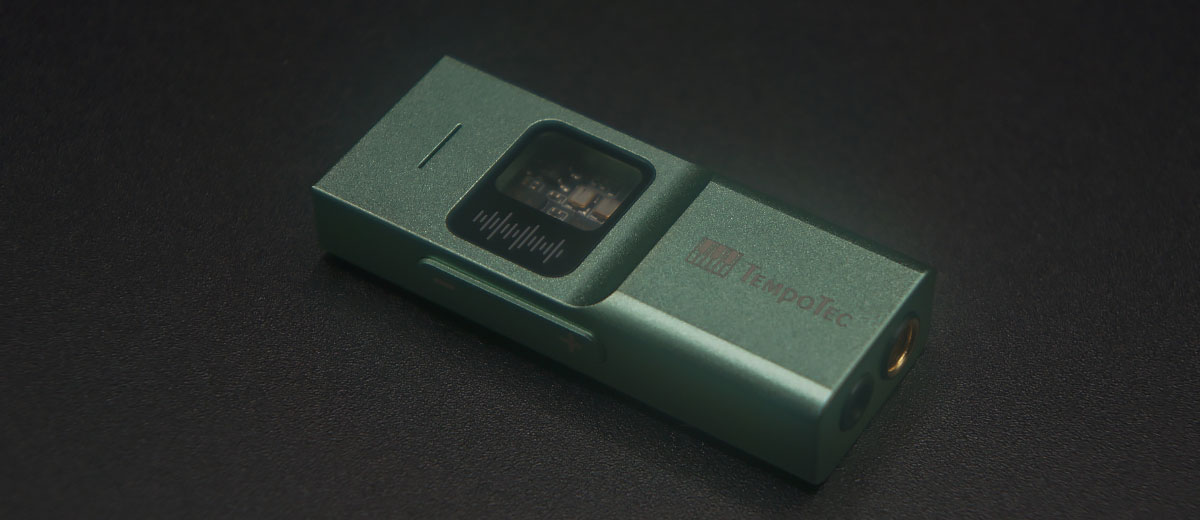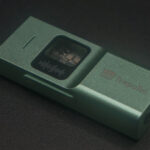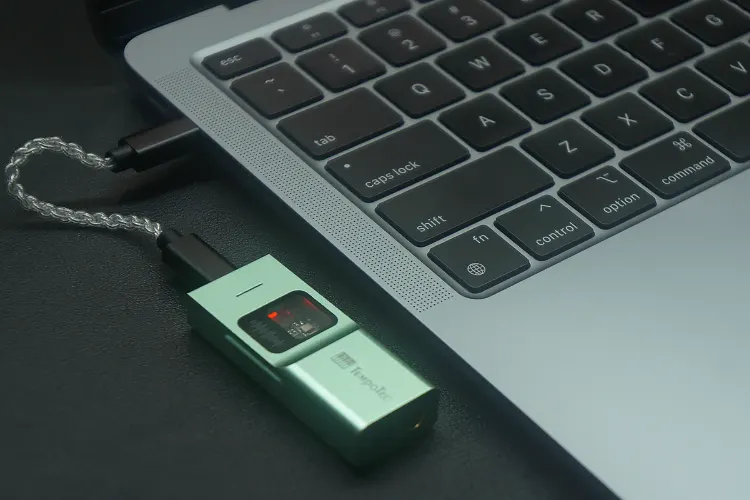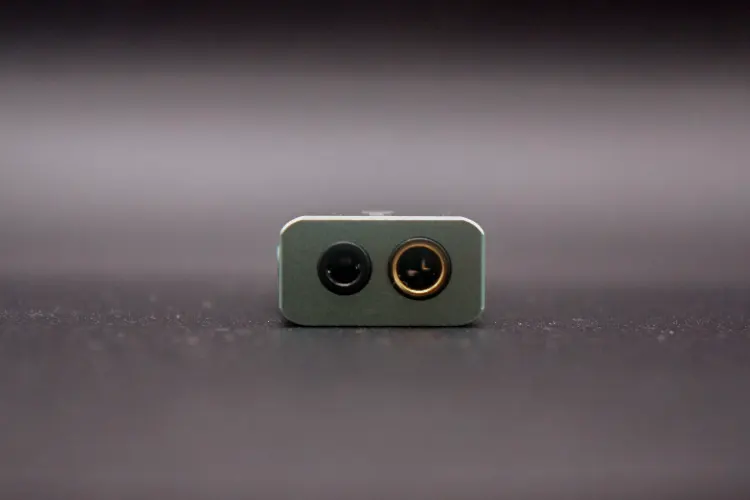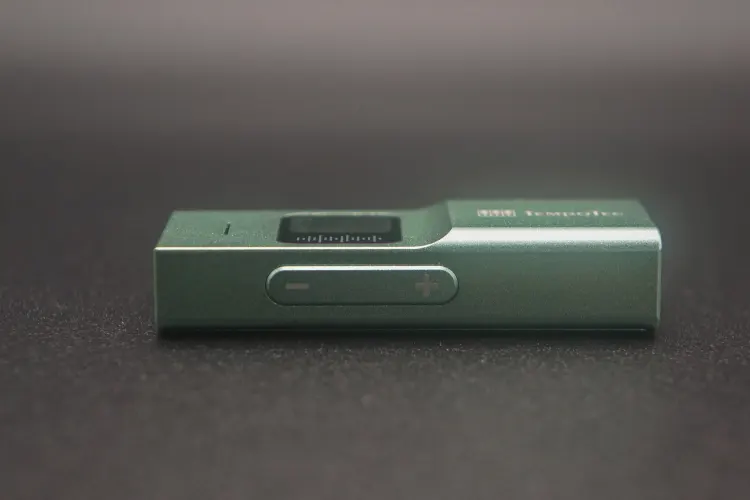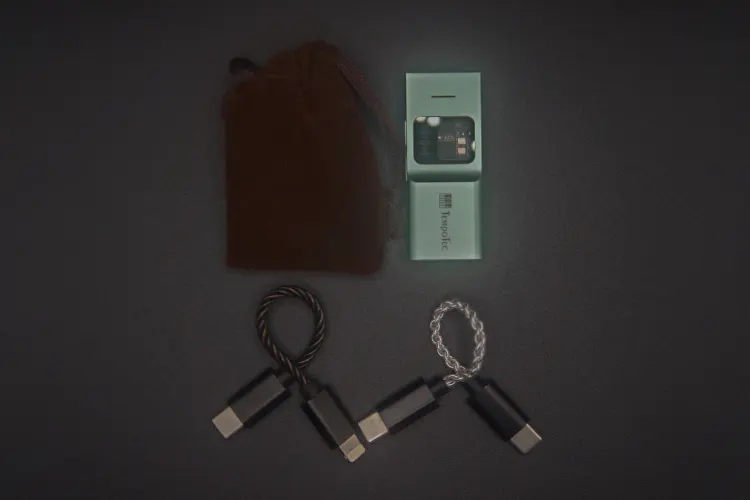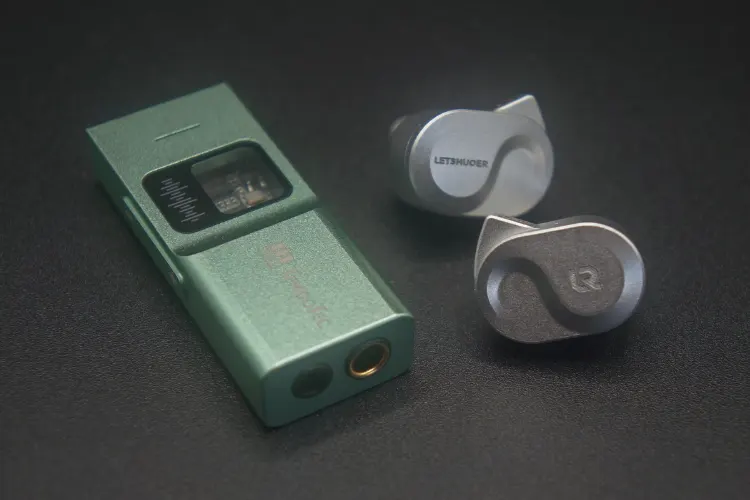Today, Meldrick reviews the TempoTec Sonata BHD Pro, a dual CS43131 dongle DAC capable of up to DSD256 and 280 mW of balanced output power. It is currently priced at $69.90.
Disclaimer: This sample was sent to me in exchange for my honest opinion. Headfonics is an independent website with no affiliate links. I thank TempoTec for their support.
Click here to learn more about TempoTec products previously reviewed on Headfonics.
Note that this article follows our latest scoring guidelines, which you can read in more detail here.
Through its Sonata product line, TempoTec has been steadily releasing a series of competitive Dongle DACs such as the Sonata E35 and Sonata iDSD, with today’s review focusing on their latest release, the Sonata BHD Pro.
Priced at $69, the Sonata BHD Pro is the company’s flagship dongle offering single-ended and balanced output options and an attractive design. On paper, the Sonata BHD Pro is a unique entry within the sea of Chi-Fi Dongles.
In my full review with comparisons below, I find out if TempoTec’s latest flagship can keep up with alternative options in the portable DAC space, such as the Kiwi Ear’s Allegro and the recently released FiiO BTR13.
Features
Like the FiiO BTR13 and other portable DACs within the price range, the Sonata BHD Pro sports a pair of Cirrus Logic CS4131 DAC chips.
This DAC configuration lets the unit natively decode up to 32-bit/384kHz, DSD256 natively, and even MQA. The Sonata BHD Pro supports up to 8X MQA unfolding, a feature that has become a rarity within this price range.
Countless pages have been written arguing for and against MQA, especially after Tidal announced they dropped support for the format. However, it is still an additional feature that could be valuable to audiophiles with MQA file collections.
Finally, the Sonata BHD Pro’s relatively high power output is a standout feature at this price point. With up to 280mW of balanced output power, the Sonata BHD Pro outclasses similarly priced yet less portable competition.
Design
The Sonata BHD Pro has a CNC-machined aluminum body with an anodized finish, giving it a clean aesthetic that pairs well with most Chi-Fi gear.
Available in Black, Grey, or Green, I received a green unit for testing. The metal has a smooth, cool surface that feels sturdy and handles comfortably. During testing, I found it was quite resistant to scratches, dings, and fingerprints.
At the top, the TempoTec logo is engraved near a slope that leads into a transparent window. This window adds some visual interest by allowing a view of the internal circuitry, though it does pick up fingerprints more easily than the metal body.
Above the window, there is an LED indicator strip that changes color according to the file format being played. On the side, a volume rocker provides tactile clicks, making it easy to adjust the volume.
The bottom panel is attached with two Philips screws and features engraved MQA and Hi-Res Audio logos. Though exposed screws on a portable dongle are unusual, I liked how the silver screws stood out against the green finish.
The Sonata BHD Pro includes 3.5mm and 4.4mm output jacks on the bottom and a USB-C input port at the top. All input and output ports fit securely and worked without issues throughout my testing.
I/O
The Sonata BHD Pro comes with a well-rounded set of input and output options, it has a single female USB-C input, 3.5mm SE, and 4.4mm for truly balanced output.
While this combination of input and output options is becoming more common in the sub-$100 price range, it does a good job of with the gear pairings and needs of users with IEMs/headphones within a similar price range.
The unit’s USB-C port works with the included Lightning and USB-C cables, or any other compatible cable. This detachable cable design allows easy connection to a wide variety of sources, making it more versatile than competitors with fixed cables, such as the ddHiFi TC44Pro 2.
The Sonata BHD Pro’s 3.5mm output provides broad compatibility for more affordable IEMs commonly used with dongles in this price bracket. The 4.4mm output supports higher-end setups with balanced cables and IEMs or headphones that need more power.
Controls
Continuing the trend of more recent portable dongles, the Sonata BHD Pro features 60 steps of volume adjustment independent from the OS level volume.
The Sonata BHD Pro’s volume control implementation varied depending on the OS and device I tried. On both iOS and macOS, plugging in the Sonata BHD Pro fully disables the phone or laptop’s volume control, forcing the user to adjust the volume using the dongle’s volume rocker.
On Windows 10, the Sonata BHD did not disable the system’s ability to change the OS volume. I found myself just maxing out the volume on the Windows 10 mixer and using the Sonata BHD Pro’s volume rocker for finer volume control.
While I appreciate the more granular 60-step volume control of the Sonata BHD Pro, trying to reach a specific listening level can be annoying because of how long the volume button needs to be held.
Since the unit also lacks a display or volume indicator, it is hard to see what exact volume level I am using. This is normally not an issue on other dongles, but a volume indicator would have been appreciated with the unit’s 60-step volume.
Packaging & Accessories
The Sonata BHD Pro comes in a simple black box that includes:
- One USB Type-C to Type-C data cable
- One USB Type-C to Lightning data cable
- Type-C to standard USB-A adapter.
- Brown carrying pouch.
While it seems simple, the Sonata BHD Pro has everything needed to connect with most of my sources. I appreciated the inclusion of a USB-C-to-Lightning cable, letting me quickly connect the Sonata BHD Pro to my iPhone 14.
I found that it can be difficult to find a short, high-quality USB-C-Lightning cable to pair with dongles, so TempoTec including it out of the box is a definite value-add
A USB-C to USB-A adapter is also a welcome addition since it enables the Sonata BHD Pro to be compatible with older laptops and desktop motherboards ‘out of the box’.
Sound Impressions
All sound impressions were completed using the Moondrop Blessing 3, the Yanyin Canon II, the LETSHUOER S08, and the Sennheiser HD 580 Precision full-sized headphones.
Bass
The Sonata BHD Pro has a flat sound signature with a slight emphasis on the upper mid-range. This gives the bass a clean and tight presentation that unfortunately lacks some punch.
Kick drums and other instruments in the sub-bass region come off as a “thump” instead of the deep-hitting slams I’m more accustomed to in other dongles. Even in more acoustic tracks, I found the Sonata BHD Pro’s sub-bass lacking.
In songs with more boosted sub-bass, the Sonata BHD Pro can articulate a fair amount of texture but does not have the dynamics to deliver a satisfying listening experience.
Its mid-bass performance is not much better either. Strums from bass guitars come off thin, sounding like pitched-down acoustic guitars. They do not have the weightiness that usually creates a lush and wide soundscape.
These shortcomings are not too noticeable when listening to more stripped-down acoustic tracks. However, most modern music requires a little bit of bass to maintain the tonal balance of the track.
Mids
The Sonata BHD Pro’s vocal and string instrument performances are one of its key strengths. Each guitar strum is articulated with good detail and pleasing harmonics.
The strums never overstay their welcome or overshadow the other instruments in the mid-range, but its clean and resolving presentation stands out from the rest of the track.
Keys and other acoustic string instruments are presented with good energy that stands out in well-mastered arrangements of multiple instruments.
The lean bass presentation also ensures that none of the low-end bleeds into the mid-range, preserving the clean presentation. Female vocals have a good sense of detail and forwardness while maintaining a natural-sounding timbre.
Other sources with good female vocal performance tend towards being on the edge of sibilance. However, the Sonata BHD Pro delivers good resolution while keeping a relatively organic-sounding vocal presentation.
Treble
The Sonata BHD Pro delivers an energetic, well-defined treble, with hi-hats and cymbals sounding crisp and distinct. This treble clarity adds brightness and a sense of openness to tracks, giving music an energetic quality.
With pop recordings, this sparkle creates a lively, engaging feel, while higher-pitched female vocals are rendered with a subtle shimmer and smoothness.
Hits from percussive instruments on the higher end of the frequency response, like snare drums, have a forward presence that’s still detailed and clear without harshness or sibilance.
Staging & Dynamics
The Sonata BHD Pro has good staging performance for a dongle. I was impressed by its ability to precisely place different string instruments even in complex arrangements.
On the other dongles I’ve tried, similar-sounding string instruments tended to blend, making each one difficult to locate. But the Sonata BHD’s flat and clean mid-range presentation prevents this.
The Sonata BHD’s dynamics are sub-par. Especially in the bass region, notes rarely had the impact I have become accustomed to. This led to a thick-sounding presentation that negatively impacted my listening experience.
This surprised me since most dongles I’ve tried these days are usually decent at worst, but the lack of weight in the bass region hurts the Sonata BHD Pro when comparing it against its peers in the price range.
Click on page 2 below for my recommended pairings and selected comparisons.

